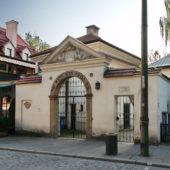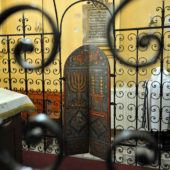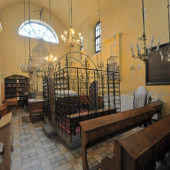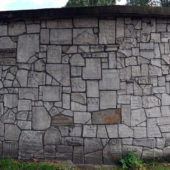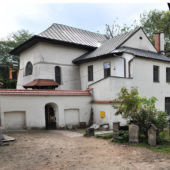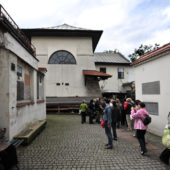The Remuh Synagogue is named after the famous Rabbi Moses Isserles c.1525-1572, known by the Hebrew acronym Remuh. The Remuh Synagogue is the smallest of all historic synagogues of the Kazimierz district of Krakow and only one currently functioning as a synagogue.
The Remuh Synagogue in Krakow, Poland, has an interesting and ancient history of Orthodox, Ashkenazi traditions. It is the smallest of the historic synagogues in Krakow, but the only one that is still active today.
One tradition regarding the origin of the synagogue holds that Israel ben Josef, grandson of Moshe Auerbach of Regensburg, founded Remuh Synagogue in honor of his son, Moshe Isserles (known by the Hebrew acronym ReMA, pronounced ReMU), who was famous for his knowledge as an astronomer, historian, philosopher and geometrician. And if that wasn’t enough, it was said by some that he was a miracle worker. His writings have been very influential among Ashkenazi Jews to this day. Another tradition eludes that Rabbi Moshe Isserles founded the synagogue in memory of his first wife Golda, who died at age twenty. This explanation is substantiated by the Hebrew inscription on the foundation, which reads:
“Husband, Reb Israel, son of Josef of blessed memory, bound in strength, to the glory of the Eternal One, and his wife Malka, daughter of Eleazar, may her soul be bound up in the portion of life, built this synagogue, the house of the Lord, from her bequest. Lord restore the treasure of Israel.”
1552 was most likely a terrible year for the Jewish community of Krakow, with many dying in the plague that struck Krakow that year. Israel ben Josef was a wealthy banker who had moved to Krakow in 1519, after the Jews had been expelled from the German city of Regensburg. The original synagogue was built in Kazimierz, a village outside Krakow in 1553, on the edge of the Jewish cemetery, on land owned by Israel ben Josef. Construction began without royal permission, which was granted in 1556. This was highly unusual. The synagogue, probably built of wood, was destroyed by fire in April of 1557.
King Sigismund II Augustus immediately granted permission, and a second synagogue was built in 1557, this time in Krakow, of masonry. It was designed by a Krakow architect in the Renaissance style, and underwent numerous changes in the 17th and 18th centuries. Today, the style reflects the restoration work done in 1829. In 1933 further refurbishment was undertaken. During the Holocaust the synagogue, confiscated by the Nazis, was used to store firefighting equipment. The interior and valuable ceremonial objects were destroyed; however, the building remained intact. In 1957 the local Jewish Community and Akiva Kahane worked together to restore the Remuh Synagogue to its former glory.
The courtyard walls outside the synagogue are adorned with inscriptions in memory of the Krakow Jews who lost their lives during the Holocaust. The prayer-room features white painted limestone walls with spacious windows flanking the side-walls. Twelve chandeliers, some hanging, some standing, add to the bright, airy ambience of the sanctuary. The elegant bimah sits in the center of the prayer-room, encased in a beautiful, 18th century polychrome double-door swirling black wrought-iron gate, featuring two entrances, with the tivah (reader’s desk) inside. The polychrome double-door came from an old synagogue outside of Krakow. The door of the bimah is crowned with a menorah featuring gilded bas-reliefs. At the front of the prayer-room, against the east wall, the Aron-Kodesh, which dates back to 1558, is lavishly carved in the Renaissance style, with an Art Nouveau. It is framed in double pilasters, with a deep wine colored Torah curtain with ivory and gold embroidery drawn across it. Carved above are tablets inscribed in Hebrew with The Ten Commandments. For seating wood benches sit upon the hand-tiled floor. The women’s gallery used to be upstairs, but is now adjacent to the northern wall of the sanctuary.
One of the accompanying photographs shows a stone wall which runs along one side of the adjacent cemetery. It is constructed from tombstones that were desecrated and shattered by the Nazis. This is the present day ‘wailing wall’ of Krakow. Moses Isserle’s tomb is found in this cemetery, near the back of the synagogue. The earliest tombstone found in the cemetery dates back to 1551. The cemetery was used until the beginning of the 19th century, when a new cemetery was opened.
Remuh Synagogue, located in what was once the Jewish Ghetto, serves as home to the active community of Jews in Krakow. There are weekly Friday night services, as well as services on High Holidays.

